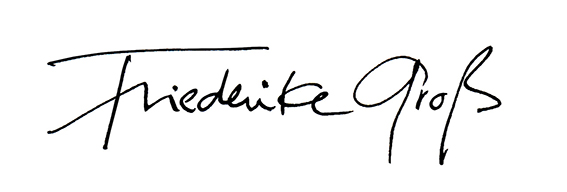English: please scroll down.
Malerei heute noch? Warum?
Die hier gezeigten Malereien kreisen inhaltlich um das Stoffliche im mehrdeutigen Sinn: um das Verhüllen, das Zeigen und zugleich Verbergen oder auch um die Illusion des Raumes in der Fläche.
In der Technik der Eitempera, einer Schichtenmalerei, wird im Prozess des Entstehens Bild um Bild aufeinander gelagert: Im Sich-Einlassen auf das Prinzip Zufall löst eine Entscheidung als Reaktion auf zufällig Entstandenes die nächste aus, wobei bestimmte interessenbasierte Themen ostinat im Untergrund mit hineinspielen.
Nach wie vor faszinierend ist, wie durch die eigene Hand eine Welt entstehen kann – als ob es möglich wäre, einen Traum zu entwerfen, der nicht verschwindet, wenn man sich an ihn erinnern will – eine Illusion, die bleibt. Denn was letztendlich aus diesem Prozess als Ergebnis hervorgeht, ist die oberste von vielen darunter liegenden Schichten – und Geschichten.
Im Motiv des Einzelbilds festgefroren wird der Zeitablauf, den eine Narration braucht, zu einem einzelnen Moment zusammengezogen, der das Vorher und zugleich das Nachher in sich trägt.
Wichtig ist dabei, dass der Bild-Raum zwar etwas erzählt und relativ eindeutig lesbar ist, aber dennoch als Träger oder Gefäß offen für eigene (oder fremde) Vorstellungen bleibt.
Painting still today? Why?
The paintings shown here revolve around the material in an ambiguous sense: around covering, showing and at the same time hiding, or also around the illusion of space in the surface.
In the technique of egg tempera, a layered painting, picture after picture is layered on top of each other in the process of creation: in the engagement with the principle of chance, one decision triggers the next as a reaction to what has arisen by chance, with certain interest-based themes ostinat playing into the background.
It remains fascinating how a world can be created by one’s own hand – as if it were possible to design a dream that does not disappear when one wants to remember it – an illusion that remains. For what ultimately emerges from this process as a result is the uppermost of many underlying layers – and stories.
Frozen in the motif of the single image, the passage of time that a narrative needs is contracted into a single moment that carries the before and at the same time the after.
What is important here is that the image-space, while telling something and being relatively unambiguously legible, nevertheless remains open as a carrier or vessel for one’s own (or others‘) imaginings.
